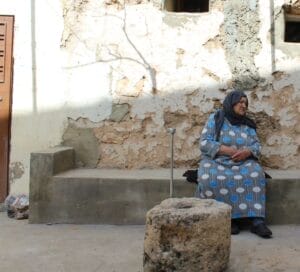
In the world, 7 out of 10 victims of unexploded devices are civilians, more than half of them being boys and girls. This is why - on International Day for Mine Awareness and Action Against Mines - we want to reiterate that the action of mine clearance of the areas affected by past and present wars is urgent and can no longer be postponed.
In the past year, 3,000 boys and girls in Syria have been injured or killed by mines and unexploded devices, often while playing in residential areas and, according to the draft of the 2020 Humanitarian Needs Overview, more than 11.5 million people in Syria live in communities contaminated by mines and unexploded devices.
These alarming numbers make many cities and rural areas places with limited safe access to services, often also hindering the delivery of humanitarian aid.
Children are particularly exposed to the risks of mine explosion because they are curious and are not always aware of the risks they may incur. Men and boys are also at risk, particularly agricultural workers digging the land, as well as population groups on the move. Women and girls, on the other hand, suffer mainly from an indirect impact as they are deprived of their freedom of movement. The residential areas as well as key infrastructure - roads, schools, health centres, agricultural land and settlements - remain, in fact, unsafe or unusable due to the contamination, further exacerbating the social and economic impact of the crisis and the chances of recovery.
DATA OF ACCIDENTS IN SYRIA:
- In Syria, every 10 minutes, there is an accident caused by mines and unexploded devices.
- Almost a third of the victims of mines and unexploded devices are boys and girls.
- 61% of them were injured or killed while playing in residential areas.
The ever-increasing number of victims, of which a large numbers of survivors suffer from permanent disabilities, further contribute to increasing the demand for already overburdened health services.
As violence subsides in parts of Syria, thousands of children and their families are returning to their homes in conflict-affected areas, where land mines, booby traps and unexploded remnants of war pose a serious risk. Risk education programmes are needed to protect children and their families across Syria, which aim to teach children and adults how to identify and report the presence of mines and protect themselves.
"Mine risk education activities can really make a difference" - explains Giulia De Cesaris, WeWorld Education Focal Point - "teaching communities to identify and avoid explosive devices is also essential to know what to do immediately after the explosion of a device to carry out first aid in the event of an accident."
Our awareness and prevention campaign in Syria supported by AICS (Agenzia Italiana per la Cooperazione allo Sviluppo - Italian Agency for Development Cooperation) aims to do just that: today, 4,000 boys and girls in Aleppo and Der Al Zor are now aware of risks associated with mines and unexploded devices, thanks to our activities, including:
- Producing and disseminating information material during community events, in public spaces and in key community places (schools, health centres, community centres, mosques, etc.);
- Training 50 volunteers involved in the organisation of educational events helping to strengthen the skills of Syrian humanitarian actors;
- Creating 40 educational entertainment events that facilitate the learning on the subject of mine risk through playful and interactive activities.
The project
The project entitled "Right to Education and Protection for children at risk" - funded by AICS , which will end in June 2021 - provides for the rehabilitation of 3 schools, the training of 350 teachers, and the implementation of awareness-raising activities at a community level, in order to raise awareness among children, adolescents and adults of the risks associated with the practice of early marriage, the presence of mines and unexploded devices and the spread of the Covid-19 virus in schools.



